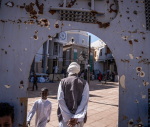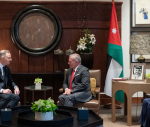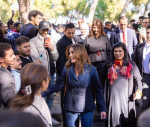You are here
Abu Dhabi marine research vessel sets sail on mission to fight climate change
By Mohammad Ghazal - Feb 14,2023 - Last updated at Feb 14,2023
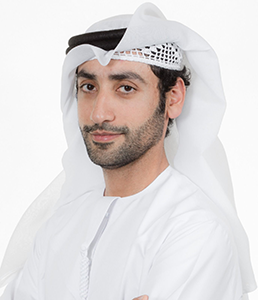
Ahmed Al Hashemi
ABU DHABI — With the launch of the Middle East's most advanced marine research vessel “Jaywun”, deployed with state-of-the-art technology to help combat climate change, the Environment Agency – Abu Dhabi (EAD) is on a mission to further strengthen the UAE’s position on the global research map and intensify climate action.
Through a series of projects, initiatives and policies, Abu Dhabi is gearing up to realise sustainable economic development, while simultaneously protecting the emirate’s rich environment and biodiversity.
Environmental preservation tops national agenda
“Since the foundation of the UAE, the late Sheikh Zayed bin Sultan Al Nahyan placed the preservation of the environment and biodiversity at the top of country’s agenda. The environment has always been at the heart of our policies and development process,” Ahmed Al Hashemi, Executive Director, Terrestrial and Marine Biodiversity Sector at EAD, told The Jordan Times in a recent meeting.
“We have always been keen on striking a balance between economic growth and development and preserving sustainability. Now we are deploying the latest technologies, including the recent launch of the state-of-the-art research vessel, to help us make better-informed decisions to ensure the environment is preserved, while taking into account sustained economic growth,” he added.
Advanced research vessel
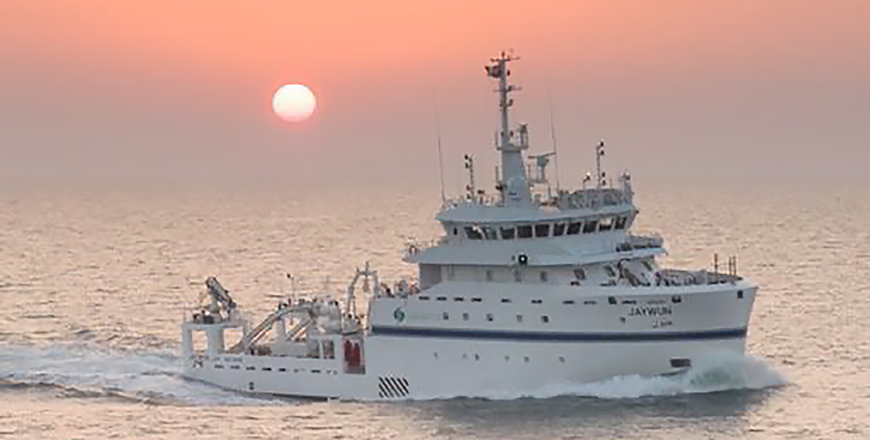
Abu Dhabi recently launched the Middle East's most advanced marine research vessel to aid efforts safeguarding marine life in the emirate amid the diverse ramifications of climate change, Al Hashemi said.
The name of the vessel, “Jaywun”, symbolises one of the finest and most valuable types of pearls. The ship will help preserve the emirate’s rich, unique and diverse marine environment and biodiversity, he said.
The vessel, which can accommodate about 30 people, is equipped with the latest research equipment, including six laboratories for studying samples.
It also includes a remotely-operated submarine, which will operate in the territorial waters of the UAE in the Arabian Gulf and the Sea of Oman, and will allow the agency to complete its research on the marine environment and fish populations in waters over 10m deep.
The agency will also use the Jaywun to monitor and preserve fish stocks and marine biodiversity and help ignite a passion for oceanography and fisheries studies in the Arabian Gulf among young Emirati researchers.
Freire Shipbuilding Company in Vigo, Spain, developed the vessel under the supervision of the Abu Dhabi Ship Building Company, with the support of a team from EAD.
“The sea is very important for us in Abu Dhabi…The location of the sea is unique and although the Arabian Gulf is the hottest sea in the world, we have a wide diversity of species, including coral, that thrive here in spite of the high salinity and hot water,” Al Hashemi said.
Much of the Arabian Gulf is still unexplored. The research vessel will explore the sea and marine life to come up with solutions to enhance the ecosystem, he noted, adding that the ship is a main initiative in fighting against and adapting to climate change.
“This research vessel will help enhance our national capacities as we are collaborating with top research centres and researchers from across the world. We have already signed several MoUs with many universities to ensure that students are involved and benefit from this experience,” he added.
Banning unsustainable fishing practices
In its efforts to preserve the environment and marine life, the UAE has banned some unsustainable fishing practices which had an impact on marine species, particularly fish stock.
“One of the challenges we faced is the low fish stock. This is why we brought the ship. We had studies in the past based on studies from 1978. We banned some practices, and after that we enhanced the reserve. We noticed a drop in the reserve, and a huge drop in fish reserves in the sea. The fishermen always complained because they used to go far areas and stay longer hours to be able to fish, but this is food security we are talking about,” Al Hashemi added.
“Then we took several firm measures, including banning unsustainable fishing practices that use nets and other traps for the fish locally known as Gargoor,” he noted, adding that following the ban, data showed that fish stocks rebounded.
The coastal and marine areas of Abu Dhabi, located on the southern border of the Arabian Gulf, are considered “a hotspot” for biodiversity, housing various habitats that support a wide range of marine species, including large fish. The agency has worked to improve the condition of deteriorating fish stocks that had been depleted by up to 85 per cent, according to its studies and surveys, he said.
Implementing EAD's guidance in this context helped protect fish stocks, with data showing that Abu Dhabi is on track to achieve its goal of sustainable fisheries by 2030. An improvement has also been achieved in the sustainable fishing index for three consecutive years, rising from 8.9 per cent in 2018 to 62.3 per cent by the end of 2021. The agency will continue working to ensure the recovery of fisheries, while achieving a level of sustainable fishing.
Efforts made by the agency to establish and manage natural reserves through the Sheikh Zayed Protected Area Network, which comprises six marine reserves representing 14 per cent of the emirate’s marine environment, have also contributed to preserving biodiversity in Abu Dhabi.
Drones to plant mangrove seeds

The UAE is also working on adopting and intensifying nature-based solutions.
One project that falls under this strategy is the planting of mangrove seeds using drones, an initiative that Al Hashemi said the emirate will intensify as of this year.
“These trees have been found to play an important role as carbon sinks. In the last 10 years, we have planted more than 15 million mangrove trees and this year, we plan to expand and intensify the implementation of the project,” he added.
Planting mangrove seeds using drones supports the Abu Dhabi Mangrove Initiative, which was announced in February 2021 during Prince William, the Duke of Cambridge’s, landmark visit to the UAE, where he met with Sheikh Khaled bin Mohamed bin Zayed, Member of Abu Dhabi Executive Council and Chairman of Abu Dhabi Executive Office, at Jubail Mangrove Park.
This initiative, which is being implemented by EAD with local, regional and international partners, supports Abu Dhabi’s ambitious plans to make the emirate a global hub for mangrove conservation research and innovation as the trees sequester carbon, a key strategy in fighting climate change.
The initiative supports the UAE Ministry of Climate Change and Environment’s target, announced during COP26 in Glasgow in 2021, which unveiled a nationwide plan to plant 100 million mangroves by 2030.
EAD is the first organisation to utilise and plant mangroves on a large-scale, utilising ecological principles enhanced by drones. The planting of one million seeds follows a successful initial phase implemented by EAD in partnership with ENGIE, the global energy company, and Distant Imagery, a drone engineering solutions company.
This initial phase focused on planting mangroves via drones in 2020, with up to a 48 per cent success rate. EAD then scaled up the project, with one million mangroves planted via drones at different locations around Al Mirfa, in Al Dhafra region.
Using drones to plant mangroves has several advantages, as the environmental footprint of the methodology is low since it removes the need for intense labour and sapling transportation. It is also cost-effective, as it reduces the overall price of mangrove planting, eliminates the need for mangrove nurseries and associated costs and facilitates reaching remote and difficult areas. The project is also running a trial on incorporating machine learning for future monitoring phases.
“This project helps preserve the environment and saves efforts and resources and the success rate of the project is on the rise,” he added.
.
Related Articles
AMMAN — The UAE has won the bid to host the World Conservation Congress of the International Union for Conservation of Nature (IUCN) i
AMMAN — The Royal Society for the Conservation of Nature (RSCN) on Sunday received 60 Arabian Oryx coming from the UAE. The move, part
AMMAN — The Royal Society for the Conservation of Nature (RSCN) and Environment Agency-Abu Dhabi (EAD) have signed a memorandum of understan







